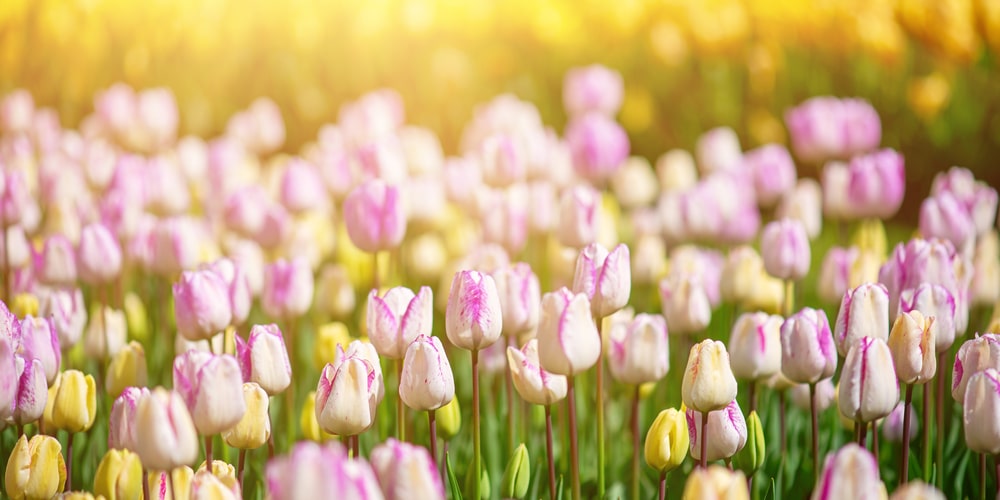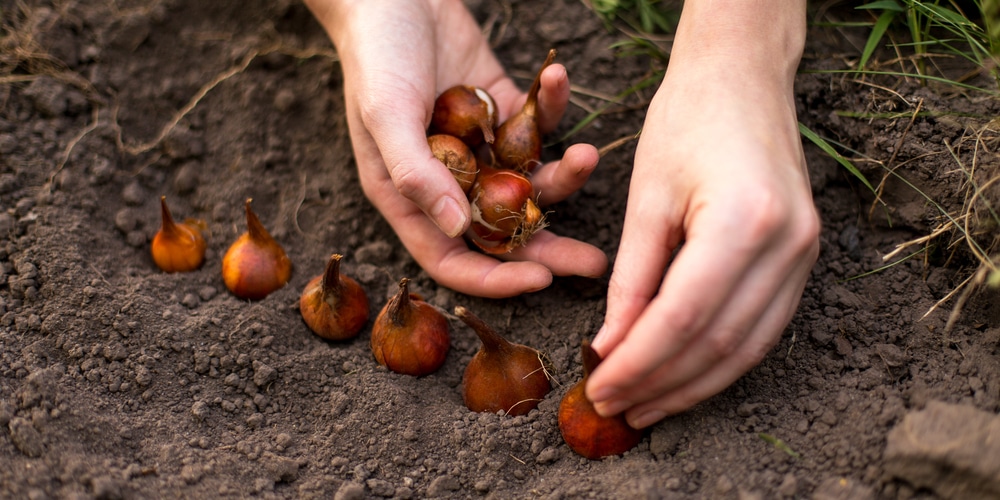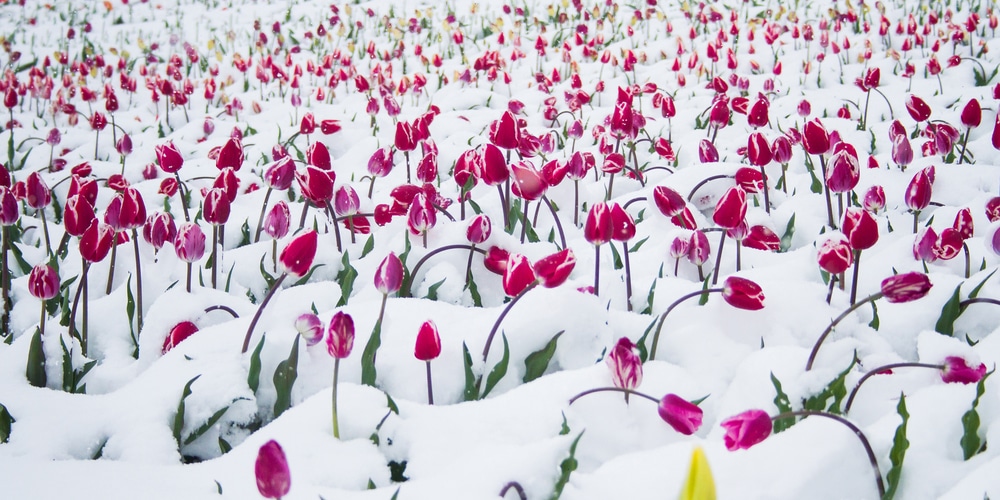Springtime in Pennsylvania would never be so cheerful without butterflies and tulips. These brightly colored flowers bring life to our gardens as the earth wakes up from winter sleep. Are you planning on growing tulips this year? Are you wondering when is the best time to grow them in Pennsylvania? Well, here is a detailed guide on when you should plant tulips in Pennsylvania.
Before we get to that, it’s important to know that tulips are quite cold-hardy. They can survive USDA climate zones 3 to 8. Pennsylvania planting zones range from zones 5 to 7. That means that you can confidently grow tulips within this state and be assured of admiring its blooms in spring.
When is the Best Time to Plant Tulips in Pennsylvania?
Generally, tulips should be planted in fall, just before the ground freezes, so that they can bloom during spring. However, in Pennsylvania, you should plant tulips preferably in the middle of fall, from October to early November. It would be best to plant tulips in mid-fall to give these plants enough time to put down roots before winter sets in. This, in turn, ensures the tulips can bloom without complications in spring.
The time you plant tulips determines the number of flowers you will get. Back to the USDA hardiness zones, as mentioned earlier, Pennsylvania comprises zones ranging from 5 to 7.
Zones 5 receive colder winters, and therefore gardeners from this region should plant earlier, around September, so that the bulbs have time to develop roots. In zones 7, since the winters aren’t that cold, there is room for planting in late fall or early winter, from November to December.
If you don’t match the requirements of your hardiness zone, you may get a lot of green leaves but very few flowers. It would help if you narrowed down to what hardiness zone your garden falls under.
That’s the only way for you to be sure when you should plant these bulbs during fall. Planting too early has its downsides because it could lead to disease problems. Make sure that you figure out the best time.
Besides the winter temperatures, the average nighttime temperatures are also a determining factor on when tulips should be planted. Tulips thrive in average nighttime temperature ranges of 40 to 50 degrees.
It’s worth noting that tulips are spring bulbs. And various species of bulbs tend to bloom at different intervals. Tulips are, however, a popular choice here in Pennsylvania because of their showy blooms. The only drawback of planting tulips is that they can easily get eaten by rodents. You must cover the planting site with wire.
If you miss out on the perfect planting season, do not wait for next fall. Instead, you should take your chances and plant them even as late as December. As long as you ensure you loosen the soil, clear snow, and add several layers of mulch. There is also the option of planting tulips in pots. So, never throw away forgotten tulip bulbs.
How to Plant Tulips in Pennsylvania?
Our guide on when to plant tulips would be incomplete if we didn’t touch on growing tips and techniques. Figuring out the ideal planting time solves only one piece of the puzzle. You still need to create the perfect environment for tulip growth. In this bulb family, rotting is very common, and it’s caused by soggy soil.
If you want your tulips to reach maturity and blossom in spring, you must plant these bulbs in well-drained soil. Alternatively, you can grow tulips in a raised bed. That will prevent flooding.
To grow healthy and flowering tulips in Pennsylvania, here is a planting guide;
1. Make sure that you find a spot that receives full sun. Even though these bulbs do well under shade, sunlight is critical for their development.
2. Plant tulips in loose soil. To achieve this looseness, you can soil the planting site at least ten inches deep and add at least two inches of compost before mixing it up.
3. Place the bulbs spacing them at least four inches apart.
4. With the help of a garden trowel, plant the bulbs thrice as deep as the height of the tulip bulbs. Ensure the place where the shoot will develop is pointed up and vice versa for the roots.
5. Water the soil and add mulch to the surface. You can add fertilizer, but that depends on how fertile your garden is. You can use NPP or granular fertilizer. A word of advice, if you have mulched the soil, there isn’t much need for fertilizer.
6. Remember when we talked about how vulnerable tulip bulbs are to being eaten by rodents. If you don’t have a wire to secure them, you can place thorny leaves in the planting holes.
Are Tulips Perennial or Annual Plants?
Knowing whether tulips are annuals or perennials is critical in helping you know when to plant them. After years of these bulbs being hybridized, most species have lost their ability to grow year after year. A tulip can flower for two years before its production decreases drastically. As a gardener, you need to treat these as annuals and plant them every fall. That’s the only way you will enjoy colorful blossoms every spring.
When to Plant Tulips in Pennsylvania?: The Bottom Line
These brightly colored plants add drama to your garden or landscape. Tulips do very well in zones 3 to 8, and Pennsylvania falls under zone 5 to 7, which means they will grow without any complications. The best time to plant them is in mid-fall.
You can, however, do it in the early or late days of fall, depending on how cold your winters are. When you plant them in well-drained soil and apply compost, your garden should be filled with tulip blossoms every year. It’s also worth mentioning that there are several varieties of tulips to choose from, which differ in flower colors, size and style.
Related Article: How Long Do Tulip Bulbs Last?


